Uncover the complex history of Prague’s past during the Cold War and communist era on this captivating walking tour. Led by a local historian, participants explore the pivotal events that shaped the city’s journey towards freedom, from the Prague Spring to the Velvet Revolution. Explore iconic landmarks while gaining a deeper understanding of the region’s political and social upheaval. With a reserve-now-pay-later policy and accessible options, this 2.5-hour tour offers an insightful glimpse into Prague’s resilient fight for independence. Prepare to be immersed in the city’s profound story, where the past intertwines with the present.
Good To Know
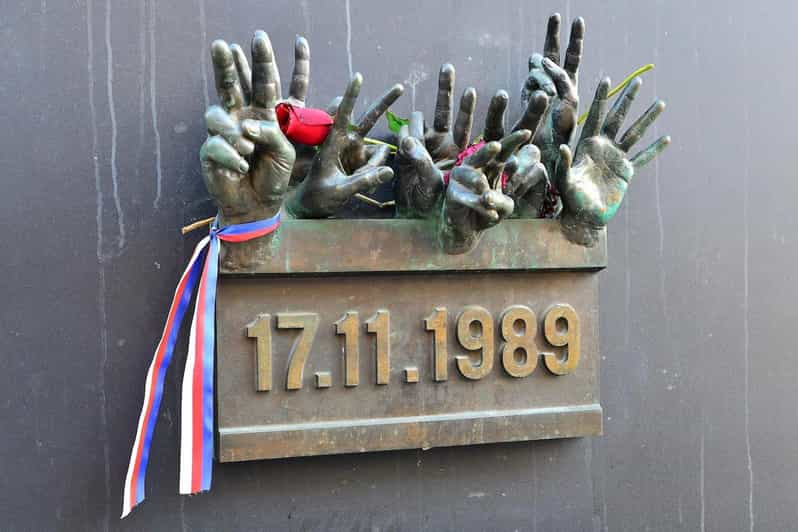
- Guided walking tour exploring Prague’s key Cold War historical sites, including Wenceslas Square, National Museum, and Dancing House.
- Insights from a local historian on pivotal events like the Prague Spring, Soviet invasion, and Velvet Revolution.
- Opportunity to learn about the personal stories and struggles of Czechoslovakians during the communist regime.
- Comprehensive overview of Prague’s central role in the end of communism in Eastern Europe.
- Wheelchair-accessible tour with free cancellation, offering a personalized experience for up to 6 participants.
It's also worth checking out some other tours and experiences nearby.
Tour Overview and Details
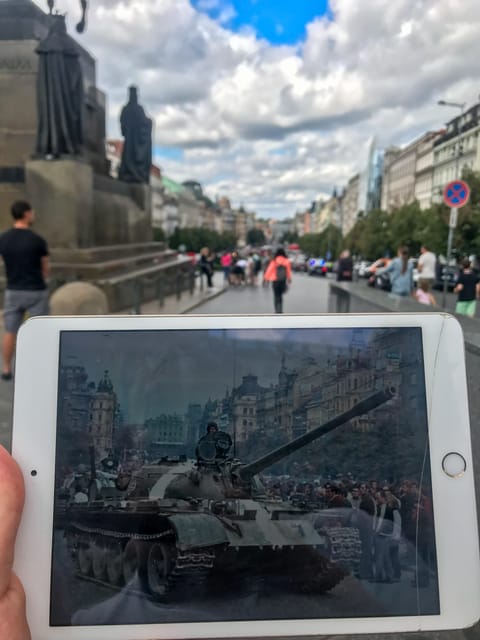
The Prague: Cold War/Communism Tour with a Local Historian offers a comprehensive exploration of the city’s pivotal role during the Cold War era.
Priced from $56.38 per person, this 2.5-hour guided walking tour is limited to just 6 participants, ensuring an intimate and personalized experience.
Conducted in English, the tour is wheelchair accessible and features free cancellation up to 24 hours in advance.
Visitors can reserve their spot now and pay later, making it a convenient option.
The tour covers key historical sites, including Wenceslas Square, the National Museum, and the Dancing House, providing insights into the Prague Spring, Soviet invasion, and Velvet Revolution.
Itinerary Highlights
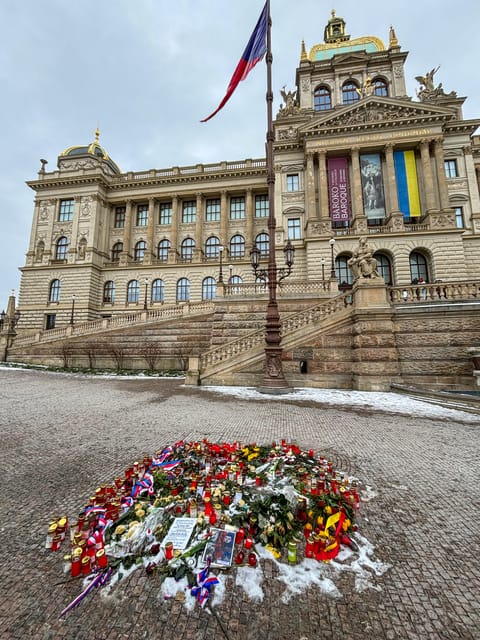
Kicking off the tour at the Statue of Saint Wenceslas in Prague’s iconic Wenceslas Square, the itinerary highlights some of the city’s most pivotal Cold War landmarks. From there, the group will visit the National Museum, the National Theatre, and the iconic Dancing House – each site holding significance in the events that shaped the region’s history.
| Stop | Significance |
|---|---|
| Wenceslas Square | Site of the Prague Spring protests and the Velvet Revolution |
| National Museum | Backdrop for the self-immolation of student activist Jan Palach |
| Dancing House | Symbolic of the city’s post-Communist architectural shift |
Providing personal insights from the son of a student leader during the Velvet Revolution, the tour offers a unique perspective on these monumental historical events.
Historical Context
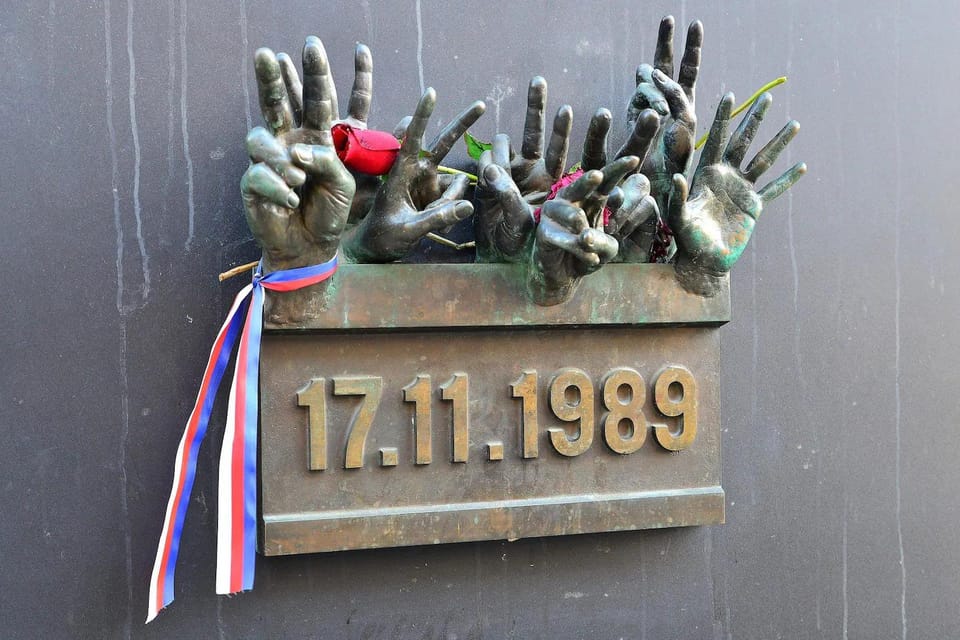
Decades after the end of World War II, Prague and the former Czechoslovakia found themselves at the center of the Cold War struggle between the Soviet Union and Western democracies.
This historical context is critical to understanding the Prague Cold War Tour. Participants will explore:
-
The Prague Spring in 1968, when the Czechoslovakian government’s attempt to liberalize communism was crushed by Soviet invasion.
-
The self-immolation of student leader Jan Palach, who sacrificed himself to protest the Soviet occupation.
-
The role of playwright-turned-president Vaclav Havel, who led the Velvet Revolution to end communist rule in 1989.
These pivotal events shaped the course of Prague’s history and Europe’s geopolitical landscape during the Cold War era.
Tour Experience
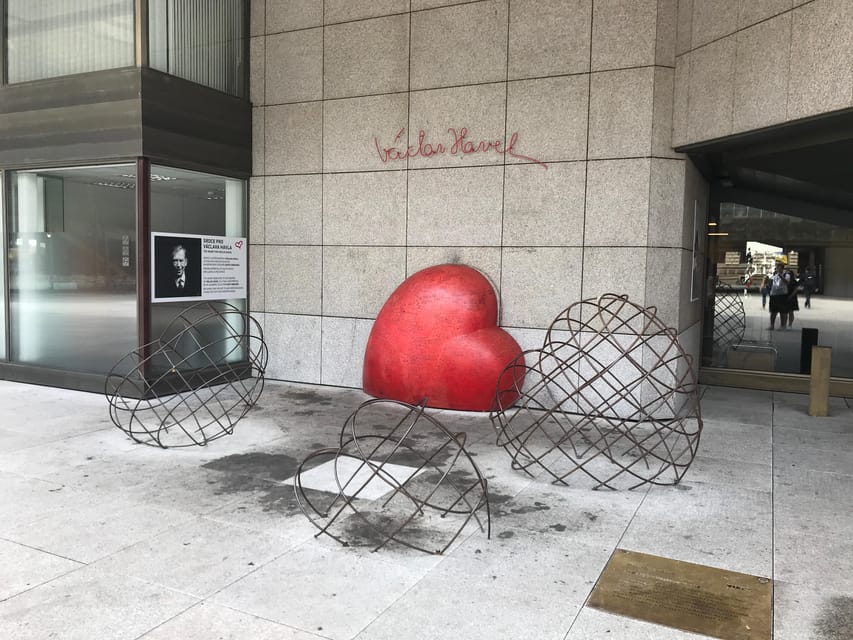
A guided walking tour through Prague’s pivotal Cold War locations allows participants to enjoy the city’s tumultuous past.
Visitors will explore Wenceslas Square, the National Museum, and the Dancing House – all sites of major events that shaped the end of Communism in Czechoslovakia and Europe.
Along the way, the tour guide shares personal narratives, adding depth and authenticity to the historical context.
Participants gain a deeper understanding of the Prague Spring, the Soviet invasion of 1968, and the Velvet Revolution of 1989 by visiting these iconic landmarks.
The tour provides a comprehensive and engaging experience, shedding light on Prague’s complex Cold War history.
Practical Information
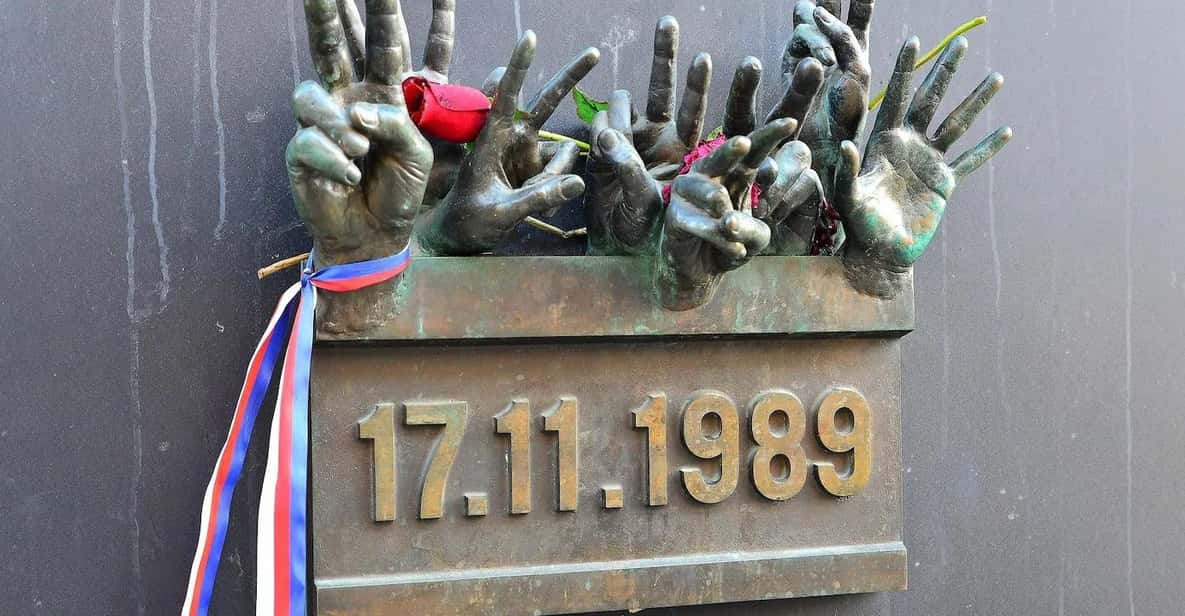
The tour meets at Václavské náměstí, in front of the National Museum, near the McDonald’s.
Participants are advised to wear comfortable shoes for the 2.5-hour walking tour through Prague’s historical sites.
The tour includes:
- A knowledgeable guide who’ll provide personal stories and insights into the Cold War era in Prague.
- Admission to all sites and museums visited during the tour.
- Complimentary bottled water and an optional tipping opportunity for the guide.
This tour offers a unique opportunity to explore Prague’s pivotal role in the end of Communism in Czechoslovakia and Europe, with a focus on key historical events and personal narratives.
The Prague Spring
The Prague Spring refers to a period of political liberalization in Czechoslovakia beginning in January 1968. Led by Alexander Dubček, the reforms aimed to decentralize the communist government and grant more autonomy to citizens. This liberalization was met with heavy Soviet resistance, culminating in the Warsaw Pact invasion of Czechoslovakia in August 1968. The crackdown on the Prague Spring crushed the hopes for reform and resulted in years of normalization under Soviet-backed rule. The events of the Prague Spring remain a powerful symbol of resistance against totalitarian control and the aspirations for greater freedom.
| Reforms | Reaction | Outcome |
|---|---|---|
| Decentralization | Soviet Invasion | Normalization |
| Citizens’ Autonomy | Warsaw Pact Forces | Loss of Freedoms |
| Political Liberalization | Crushing of Reforms | Soviet Dominance |
| Dubček Leadership | Czechoslovakian Resistance | Decades of Communism |
The Soviet Invasion of 1968
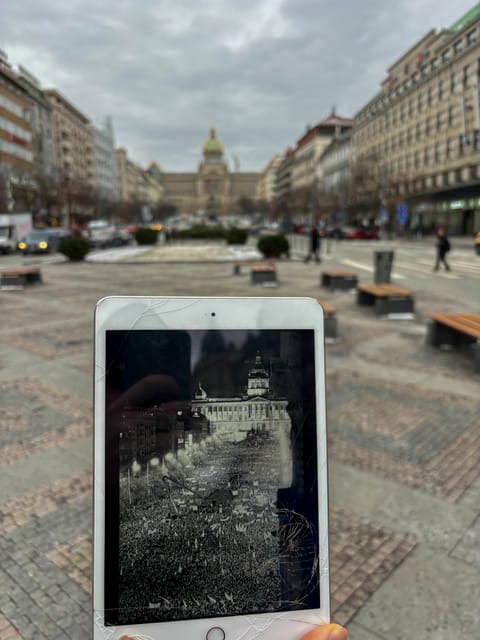
On the night of August 20th, 1968, Warsaw Pact forces, led by the Soviet Union, forcefully invaded Czechoslovakia, crushing the reformist Prague Spring movement.
This military intervention ended the liberalization efforts and restored the Communist regime’s control.
The invasion had three key consequences:
-
Thousands of Czechoslovakian citizens protested the occupation, with Jan Palach’s self-immolation becoming a symbol of resistance.
-
The invasion damaged relations between the Soviet Union and its Warsaw Pact allies, leading to a period of distrust and instability in Eastern Europe.
-
The events of 1968 sowed the seeds for the eventual collapse of Communism in Czechoslovakia, culminating in the Velvet Revolution of 1989.
The Velvet Revolution of 1989
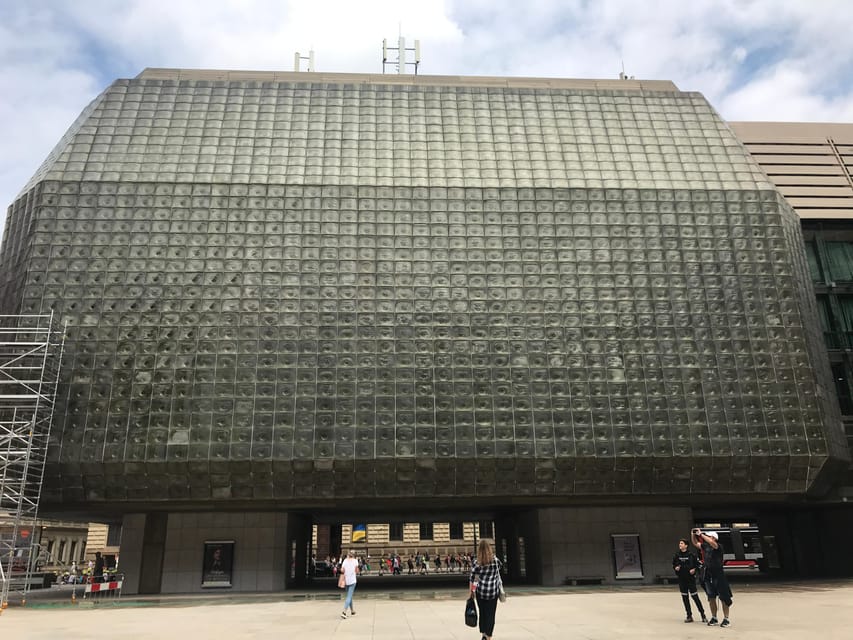
After the Soviet invasion of 1968, Czechoslovakia remained under communist rule for over two decades. However, discontent grew, and in 1989, the Velvet Revolution swept across the country, peacefully overthrowing the communist regime. Led by playwright and dissident Vaclav Havel, the revolution saw massive protests and demonstrations that forced the government to resign. This transition marked the end of Communist rule and the hotel of a democratic Czechoslovakia, which later split into the Czech Republic and Slovakia.
| Key Events | Dates |
|---|---|
| Prague Spring | 1968 |
| Soviet Invasion | August 1968 |
| Velvet Revolution | November 1989 |
| Dissolution of Czechoslovakia | January 1993 |
Here's a few more nearby tours and experiences we think you'll like.
Frequently Asked Questions
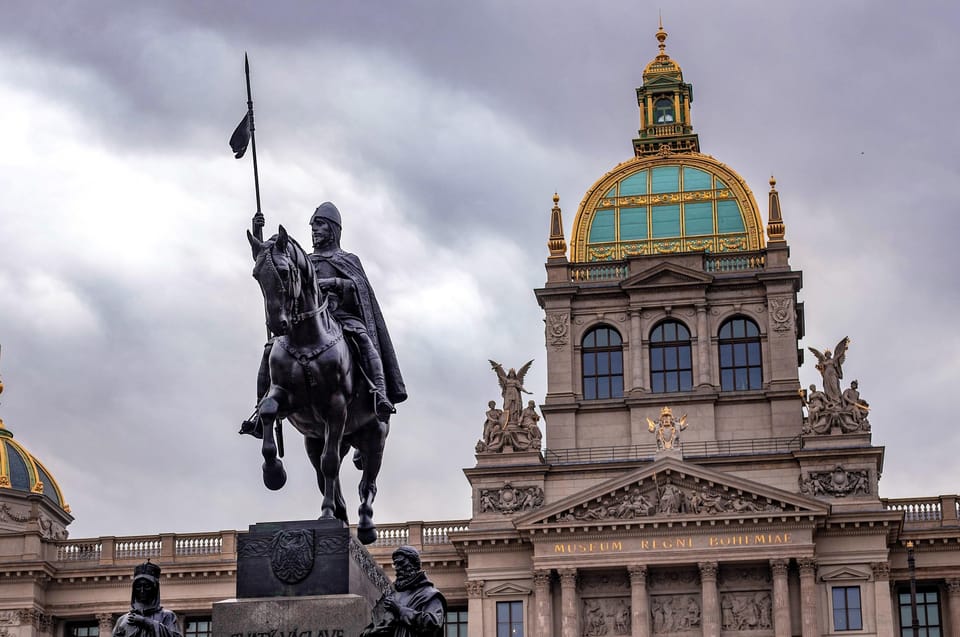
What Is the Level of English Proficiency Required for the Tour?
The tour is conducted in English, so a good level of English proficiency is required to fully engage with the historical insights and personal stories shared by the local historian guide.
Can the Tour Be Customized for Private Groups?
The tour can be customized for private groups. Participants can tailor the itinerary and focus areas to their specific interests. Private tours offer a more personalized experience for groups of friends, families, or organizations.
Are There Any Age Restrictions or Recommendations for the Tour?
The tour doesn’t have any age restrictions, but it’s recommended for ages 12 and up. The content and walking may not be suitable for young children. The tour is appropriate for most adults and teenagers interested in the history.
Is There an Option to Extend the Tour Duration if Desired?
The tour description doesn’t mention an option to extend the duration, but participants can likely discuss this with the tour guide if they’d like to spend more time exploring the historical sites and themes covered.
Can the Tour Guide Provide Recommendations for Other Cold War-Related Sites in Prague?
The tour guide can provide recommendations for other Cold War-related sites in Prague, allowing participants to further explore the city’s historical significance during this period on their own.
Not for you? Here's more of our most recent tour reviews happening neaby
- Prague: Old Town Hall Tower + Old Town & Jewish Quarter Tour
- Full-Day Private Trip From Prague to Berlin
- Prague: 2-Hour Old District & Riverside E-Scooter Tour
- From Prague: Full-Day Trip to Český Krumlov
- Prague: Nightwatchman of Prague Walking Tour
- Prague: Private Exclusive History Tour With a Local Expert
- Prague Cold War Walking Tour
- Prague Castle Walking Tour
- Kutná Hora From Prague With Audio Guide
- Prague: 3h Private Tour of Prague Castle, Admission Incl.
- Prague: Ghosts and Legends Nighttime Guided Walking Tour
- Prague : Private Transfer To/From Prague Airport (Prg)
- Private Transfer From Prague to Passau
- From Prague: Kutná Hora Day Excursion With Bone Church
- From Prague: Devils Heads – Full-Day Hiking Trip
The Sum Up
The "Prague: Cold War/Communism Tour With a Local Historian" offers a profound exploration of the city’s pivotal historical events. Participants explore the Prague Spring, the Soviet invasion, and the Velvet Revolution, guided by a local historian’s insights. With a personalized experience and accessible options, the tour provides an in-depth understanding of Prague’s journey toward freedom, leaving guests with a deeper appreciation for the city’s resilience and transformation.
